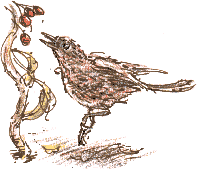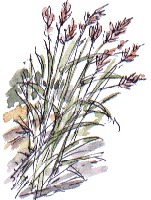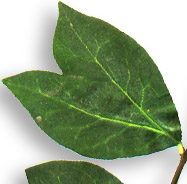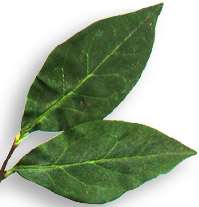
Rowan BerriesMonday 31st July 2000  A FEMALE BLACKBIRD (or perhaps a juvenile) feeds on the Rowan berries in the front garden. We've got limited space at the front so we decided this would be a good choice of wildlife tree that will give some height, without dominating the garden. It gives blossom in the spring, followed by berries and autumn colour. The feathery foliage doesn't shade out everything beneath. We've planted it so that, seen from the house, it masks the lamp post. My sketch, from the 8th of August last year, shows a young blackbird that was hopping repeatedly to peck at Honeysuckle berries.
 Small hoverflies visit the developing seedheads of Reed Canary-grass, Phalaris arundinacea, (also know as Reed Grass, or 'Canal Grass') by the towpath. As all hoverflies are nectar feeders and grass doesn't offer nectar (as far as I know) what is the attraction for them? Small hoverflies visit the developing seedheads of Reed Canary-grass, Phalaris arundinacea, (also know as Reed Grass, or 'Canal Grass') by the towpath. As all hoverflies are nectar feeders and grass doesn't offer nectar (as far as I know) what is the attraction for them?There are four hoverflies of the same species on adjacent seedheads of the clump of grass. Two of them push up right in amongst the seedheads. One gives chase to another. I can't imagine there is anything they could feed on here. Is this, perhaps, a place where males congregate to watch for females? If so, why push their way into the seedheads. It's 4 o'clock on a dull afternoon, is this a safe hiding place for them to bed down for the night? A blue-tailed damselfly flies rather weakly and then settles on the stem of the canary-grass below the hoverflies.
|

